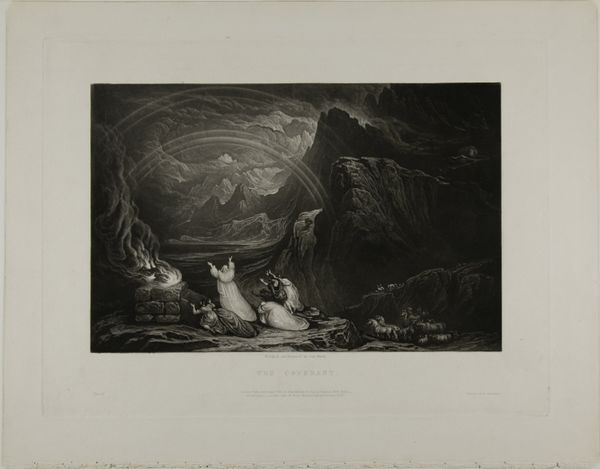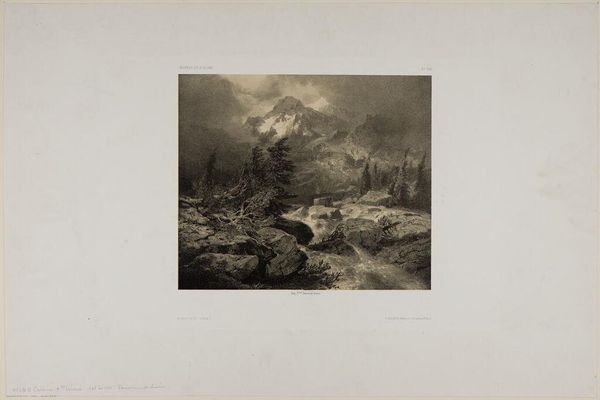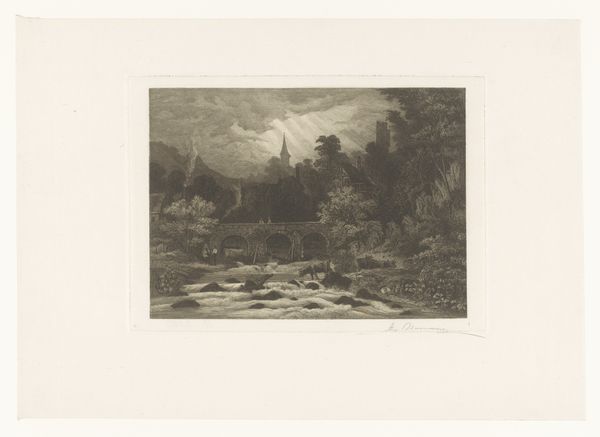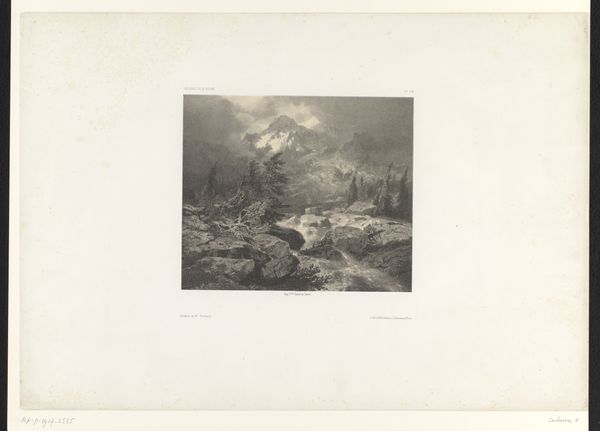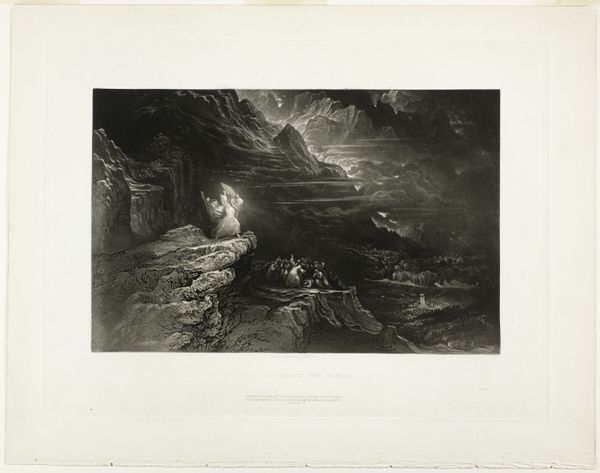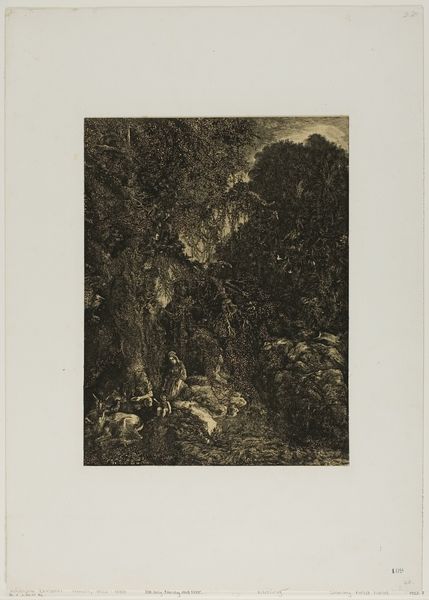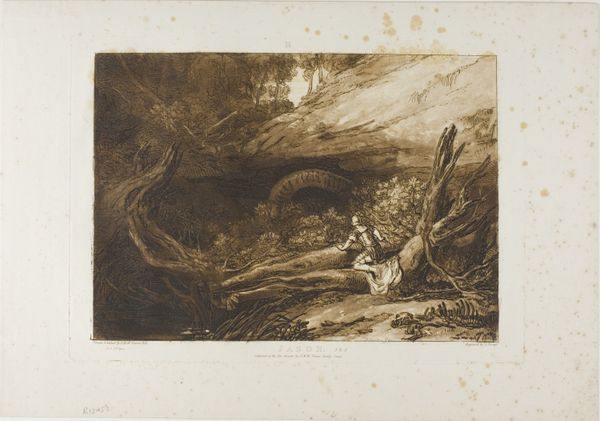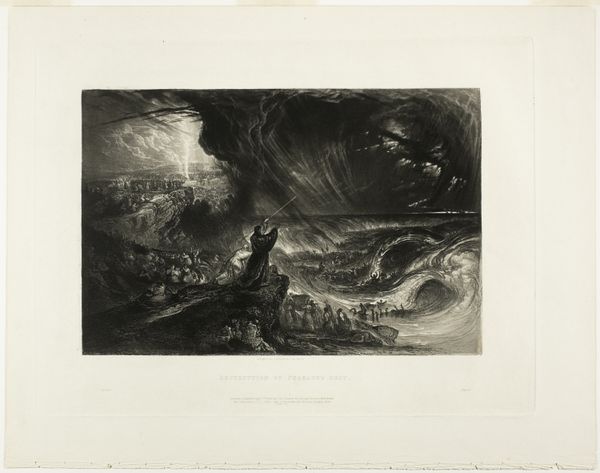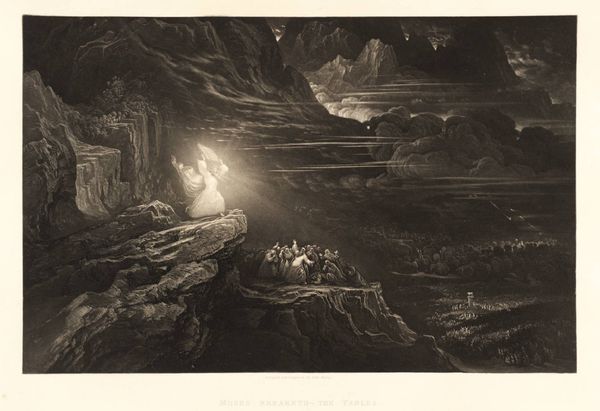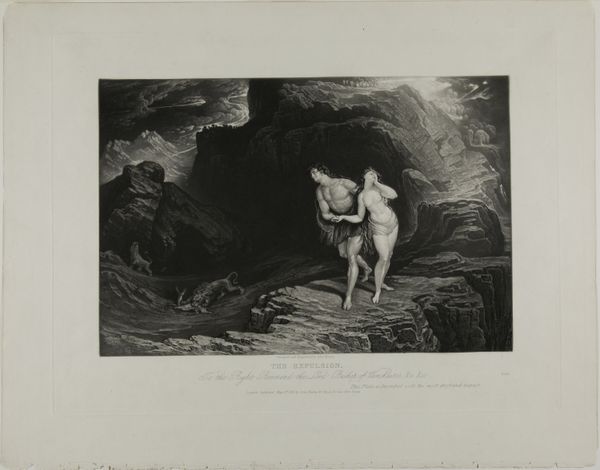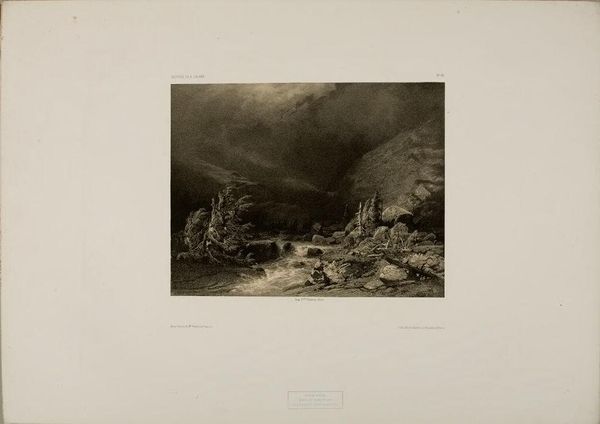
Moses and the Burning Bush, from Illustrations of the Bible 1833
0:00
0:00
drawing, print, paper, engraving
#
drawing
#
negative space
#
narrative-art
# print
#
landscape
#
paper
#
romanticism
#
history-painting
#
engraving
Dimensions: 190 × 290 mm (image); 268 × 357 mm (plate); 329 × 416 mm (sheet)
Copyright: Public Domain
Curator: Here we have John Martin's "Moses and the Burning Bush, from Illustrations of the Bible," an engraving dating from 1833. The work depicts the iconic biblical scene. What’s your immediate take? Editor: The first word that comes to mind is 'drama'. The scale is immense; tiny figures of Moses and his flock dwarfed by this overpowering, almost theatrical landscape. It feels apocalyptic. Curator: Martin was known for his dramatic landscapes, often emphasizing the sublime power of nature. His depictions weren't just literal illustrations; they served a purpose in the religious and social discourse of the era. What can we observe within that historical and societal scope? Editor: Definitely a reflection of the anxieties of the Industrial Revolution, a need to reconnect with a more ancient and powerful God, perhaps? This isn't your gentle, pastoral image of faith, this is something far more challenging. The landscape mirrors internal struggles, echoing current societal unrest, questions of authority. Moses’ story of liberation also reflects this desire. Curator: Indeed. His artistic choices, like using engraving, allowed for wide dissemination, putting the image within reach of many, and enabling dialogues beyond the traditional art circles. It would have fostered conversations and provided accessible social commentaries. Editor: I find this a powerful comment on the idea of encountering the divine in everyday life. Even in the most daunting or desolate landscapes, faith finds room. I feel challenged as the artwork offers both visual spectacle, a romantic vision of nature, as well as some form of radical agency. Curator: His technical mastery brought the grand scale of Biblical stories to life for a nineteenth-century audience. This particular engraving enabled access to what otherwise would be an exclusive experience, encouraging discussion and allowing for varying interpretations and debates. Editor: Thinking about its time, a moment of questioning faith versus industry, revolution and rapid urbanization... seeing Moses's encounter within such a powerful and dynamic natural setting would offer strength and new ways of critically viewing power. Curator: The print leaves you contemplating humanity's place within these larger historical events. Thanks for sharing these viewpoints! Editor: Thank you. I am challenged to contemplate, not only the landscape and Moses, but also how one engages with authority at different levels.
Comments
No comments
Be the first to comment and join the conversation on the ultimate creative platform.
